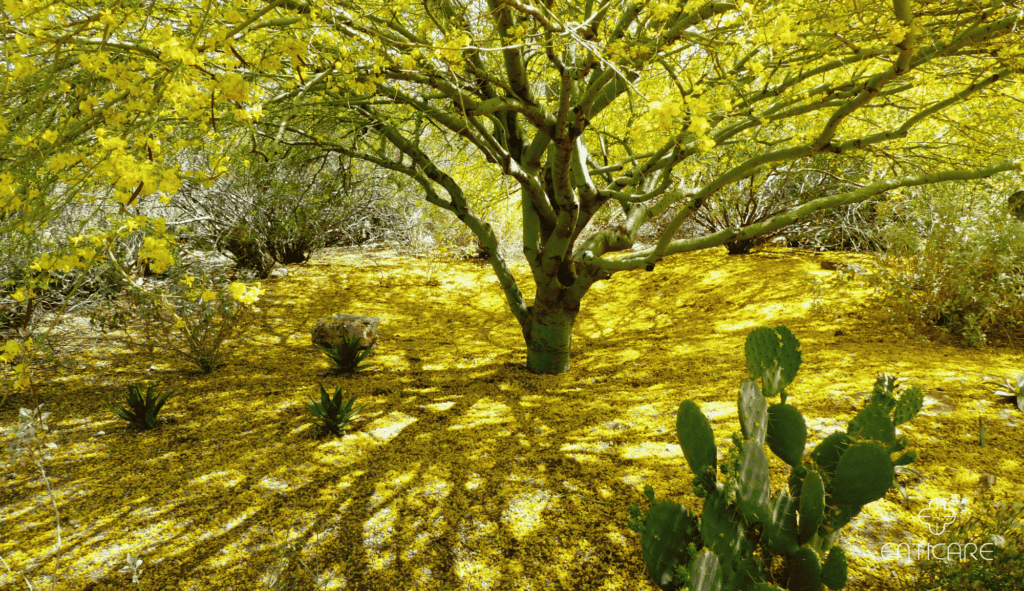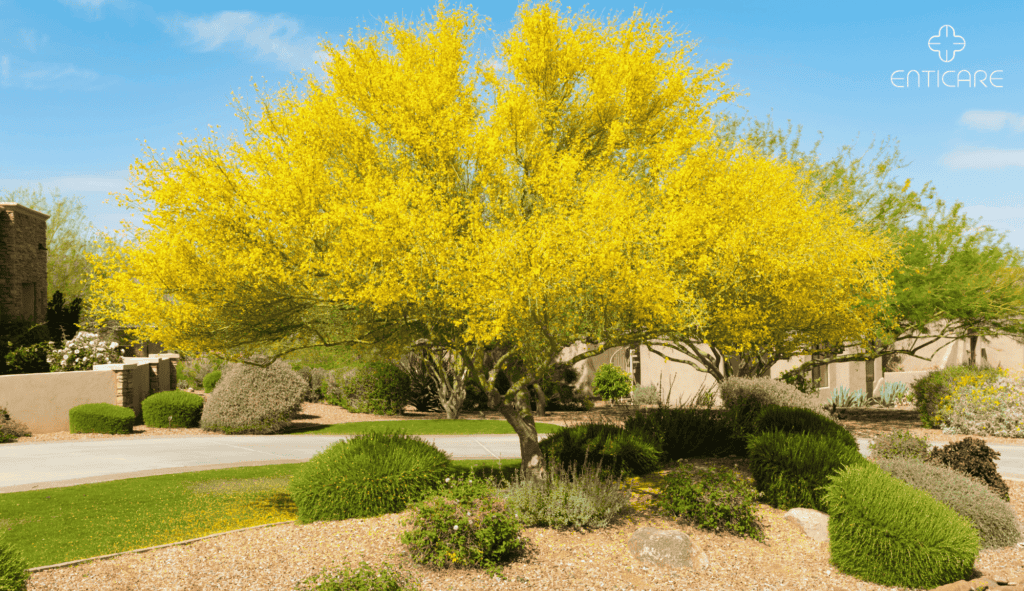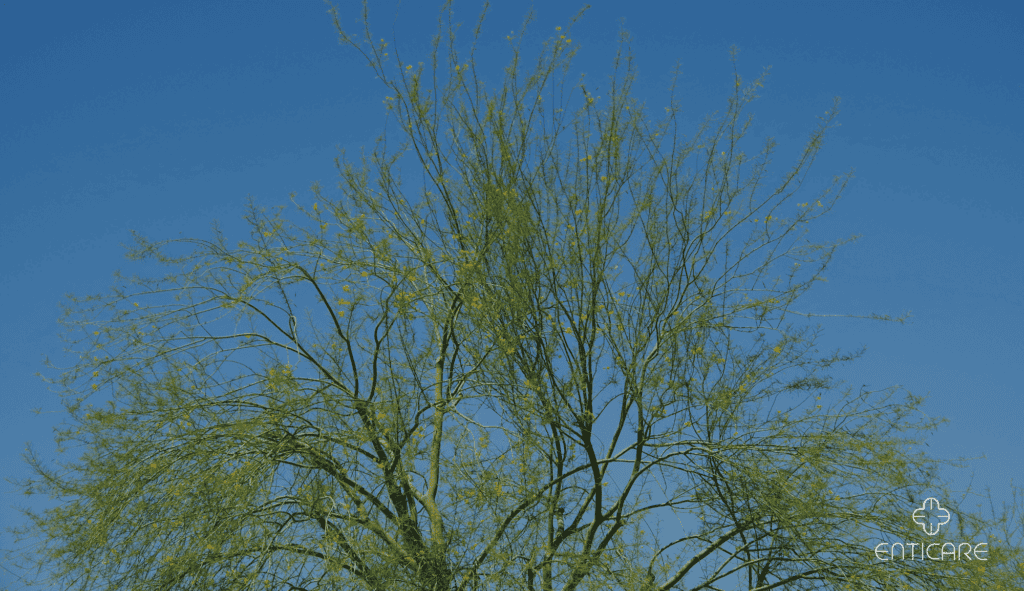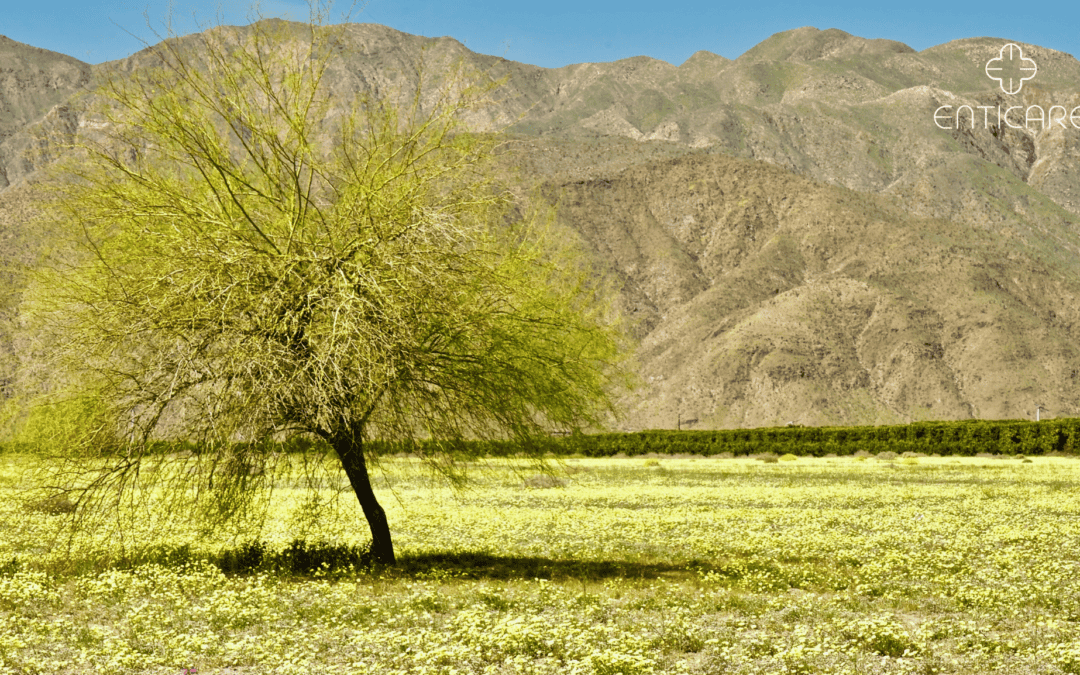The palo verde tree, a symbol of resilience and desert beauty in the American Southwest, might hold a hidden threat for some individuals. Palo verde tree allergies, triggered by the wind-borne pollen released by these striking trees, can cause unexpected discomfort and disrupt outdoor activities.
Palo verde trees, with their vibrant yellow blooms and distinctive green bark, are a defining feature of arid landscapes. While valued for their aesthetic appeal and ecological role, they can trigger allergies in sensitive individuals.

Unveiling the North American Story:
Palo verde trees are native to the Sonoran Desert region of North America, stretching from southern California and Arizona to parts of Mexico. There are two main species relevant to allergies:
Blue Palo Verde (Cercidium microphyllum): This species is the most widespread and recognizable, with bright yellow flowers.
Foothill Palo Verde (Cercidium molle): This species has yellow or greenish-yellow flowers and a more limited distribution.
Knowing the specific types of palo verde trees in your area can help you anticipate potential allergy concerns.

Exploring the Unique Seasonality and Characteristics:
Palo verde allergies typically occur during the late spring months, from April to May. Here’s a breakdown of the key factors:
Blooming Season: This coincides with the period when the trees release their wind-borne pollen.
Microscopic Pollen: Invisible to the naked eye, the pollen is easily carried by wind, increasing the risk of inhalation and potential allergic reactions.
Allergenicity: While not as common as other seasonal allergies, palo verde pollen can trigger reactions in sensitive individuals.
Limited Research: Compared to more widespread allergens, research on palo verde allergies is ongoing, and the exact allergens in the pollen may not be fully identified.
Discovering the Symptoms:
Palo verde allergies can manifest in various ways, often mimicking other seasonal allergies. Here are some common signs to watch out for:
Hay fever: This includes symptoms like runny nose, sneezing, itchy and watery eyes, and congestion.
Sinus issues: Facial pressure, headaches, and postnasal drip can occur.
Respiratory problems: Coughing, wheezing, and difficulty breathing might be experienced in severe cases.
Skin reactions: Hives, rashes, or eczema can develop in some individuals.

Managing Palo Verde Tree Allergies:
If you suspect you might have palo verde tree allergies, consulting a healthcare professional is crucial for proper diagnosis and a personalized management plan. Here are some general tips for effective management:
Minimize exposure: During peak pollen season, stay indoors when possible during the daytime, keep windows closed, and consider using air purifiers at home.
Medication: Antihistamines and nasal corticosteroids, as prescribed by your doctor, can help alleviate allergy symptoms.
Allergy shots (immunotherapy): In specific cases, your doctor might recommend allergy shots to desensitize your immune system to the pollen over time. Due to limited research, this option might not be as readily available for palo verde allergies compared to more common allergens.
By understanding the origins, unique seasonality, and potential risks of palo verde tree allergies, you can proactively manage your health and navigate your environment with confidence. Call us now here in Enticare at 480-214-9000!

